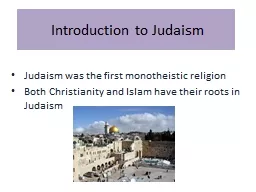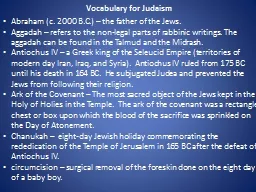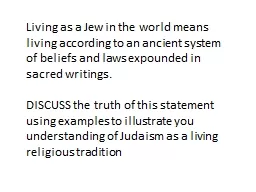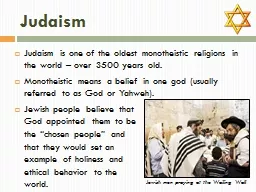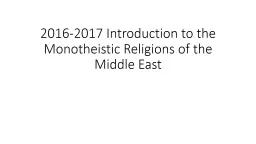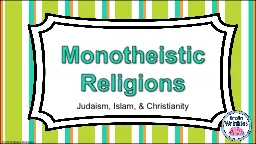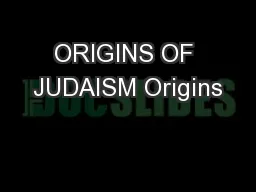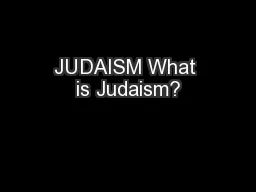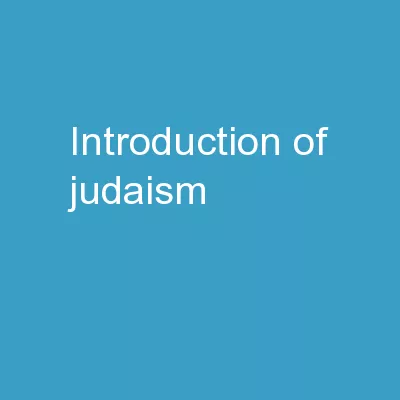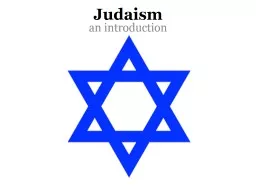PPT-Introduction to Judaism
Author : sherrill-nordquist | Published Date : 2020-04-05
Judaism was the first monotheistic religion Both Christianity and Islam have their roots in Judaism Introduction to Judaism As of 2010 there were nearly 135 million
Presentation Embed Code
Download Presentation
Download Presentation The PPT/PDF document " Introduction to Judaism" is the property of its rightful owner. Permission is granted to download and print the materials on this website for personal, non-commercial use only, and to display it on your personal computer provided you do not modify the materials and that you retain all copyright notices contained in the materials. By downloading content from our website, you accept the terms of this agreement.
Introduction to Judaism: Transcript
Download Rules Of Document
" Introduction to Judaism"The content belongs to its owner. You may download and print it for personal use, without modification, and keep all copyright notices. By downloading, you agree to these terms.
Related Documents

